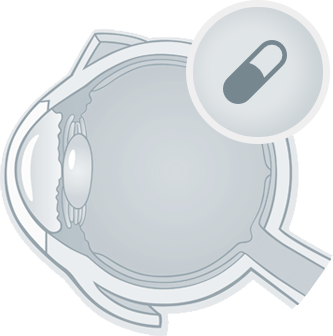Tears are formed mainly in the tear gland, located in the upper outer zone within the orbital cavity, and, once their function of protection, hydration and lubrication of the eyeball have been performed, they are removed towards the nostril through the so-called lachrymal ducts.
These begin at the lachrymal punctum. There is one lower and one upper at the inner angle of each eyelid and continues with the upper and lower canaliculi, which are a kind of small pipe that channel the tear into the lacrimal sac.
In many cases, these two canaliculi converge in a common one before reaching the lacrimal sac, a receptacle that plays a very important role in the correct functioning of tear removal.
During blinking, the tendon of the orbicularis muscle empties the lacrimal sac, since its insertion in the bone wall of the orbit is by means of a double tendon that surrounds it in front and behind the sac and, when squeezed, acts as a suction pump which draws up the tear that accumulates on the surface of the eye and leads it to the nostril through the lacrimal-nasal canal, which opens into the inferior meatus.
Any alteration in one of the parts of this pathway results in poor tear removal and, consequently, a tearing that can be constant or intermittent.
CAUSES AND SYMPTOMS
The obstruction of the lacrimal ducts may be of congenital origin, be from birth or occur in adulthood. When the obstruction is congenital, its most frequent location is at the lower level, where the lacrimal-nasal passageway in the nose (lower meatus) opens. This occurs in approximately 6% of full-term infants and 11% of premature infants. This obstruction causes a constant tear in the baby, which is often accompanied by abundant mucopurulent secretions. Acute dacryocystitis (lacrimal sac infection) may occasionally occur, which must be treated with antibiotics and anti-inflammatories, either in eye drops or by mouth.
More than 90% of the cases are resolved spontaneously before the first year of life. During this period, the treatment consists of performing massages in the area of the lacrimal sac, good hygiene applied to that area and, when there is infection, the application of appropriate antibiotic treatment. If tearing with constant secretion persists at 11 or 12 months of age, a catheter should be performed on the lachrymal duct. If this fails, a binacanicular intubation with Crawford tubes we will be carried out. This consists of passing small silicone tubes through the entire lachrymal pathway and leaving them for a few months before their being withdrawn at the consultation.
If, however, symptoms continue to occur, the next step would be to perform a transcanalicular dacryocystorhinotomy (DCR) with diode laser and binacanicular intubation, although it is not advisable to do so before 2 or 3 years of age.
Obstruction of the lacrimal duct in adults can be due to multiple causes: chronic conjunctivitis, trauma, etc., and can be located anywhere in the tear, from the lacrimal punctum to the mouth in the nostril, and may even be due to alterations of this, such as a deviated septum, a hypertrophic hornet, polyps, rhinitis or chronic rhinosinusitis, etc. The failure of the lacrimal drainage system results in epiphora and recurrent infections of this structure, which may endanger the orbital integrity and the eyeball.
TREATMENT
There are several ways to surgically approach a blockage of the lachrymal ducts, always depending on the clinical picture, location and special circumstances of each patient. Each case is different and what went well with one person does not have to go well with another necessarily. It is very frequent in the consultancy to hear patients say “well, my neighbour…”, or “a relative of mine…”. It must be kept in mind that each case is different and needs different approaches.
An obstruction that only affects the lacrimal punctum can be resolved with a small intervention, with local anaesthesia (punctoplasty) performed on an outpatient basis in a few minutes. However, an obstruction with fibrosis of the canaliculi requires the reconstruction of the entire lacrimal pathway and the placement of a permanent prosthesis acting as an artificial lacrimal duct.

DACRYOCYSTORHINOSTOMY (DCR) ASSISTED WITH DIODE LASER.
It is a fast technique, with little trauma in the tissues, minimal bleeding, which allows a good visualisation of the nasal structures and does not leave external scars, although, sometime it is not possible or advisable to apply this technique. In such cases an external DCR is carried out with very good functional results, totally comparable to those of the laser technique.
The surgery, which is performed with local anaesthesia and sedation, consists of introducing the optical fibre of the diode laser through the Lacrimal punctum and canaliculus, to the lacrimal sac, and performing a new communication between the lacrimal sac and the nasal cavity at the level of the middle meatus, all under endoscopic control with a micro chamber that is inserted through the nostril.
Once this new communication is made, a silicone tube is inserted through the upper and lower lachrymal duct and is passed to the nose, maintaining it there for 3 to 6 months, after which it is removed during a routine consultation. The purpose of intubation is to avoid secondary closure of the new communication. When a few months have passed, it is assumed that the healing process is finished and it can be removed.
The surgery takes about 30 minutes and the next day the patient can resume a virtually normal life.
The success rate of this technique is over 80% and is similar to other techniques such as the classic external DCR.


